A standard 1989 Kennedy half dollar is worth approximately $0.60 to $10 depending on its condition and mint mark. Coins with “P” (Philadelphia) or “D” (Denver) mint marks are typically worth around $0.60 in circulated condition, while uncirculated examples command slightly higher prices. The “S” (San Francisco) mint mark coins were only produced as proof coins with mirror-like finishes, making them more valuable at several dollars. While 1989 half dollars aren’t known for major errors, rare varieties like doubled die obverse/reverse, off-center strikes, and lamination errors can significantly increase value. To identify errors, examine coins carefully for doubled images on letters or numbers, check for off-center strikes with missing design portions, and inspect surfaces for metal layer separation.
Finding a 1989 Kennedy half dollar in your pocket change might seem unremarkable at first glance. However, understanding the nuances of mint marks, grading conditions, and potential errors can transform that fifty-cent piece into something more valuable. While most 1989 half dollars won’t fund your retirement, specific varieties and mint state examples command premiums that make them worth examining closely. This guide breaks down exactly what your 1989 half dollar is worth and what errors to search for.
Understanding the 1989 Kennedy Half Dollar Production
The Kennedy half dollar series continued its steady production in 1989, though by this point, these coins rarely circulated in daily commerce. The Philadelphia and Denver Mints struck copper-nickel clad coins for general circulation, while San Francisco focused exclusively on proof specimens for collectors.
The composition consists of an outer layer of 75% copper and 25% nickel bonded to a pure copper core, giving each coin a total weight of 11.34 grams and a diameter of 30.6mm. This clad composition, introduced in 1971, replaced the 40% silver Kennedy half dollars minted from 1965-1970.
The total mintage for 1989 reached approximately 47 million coins across all facilities. Philadelphia produced roughly 24.5 million pieces, Denver struck about 23.7 million, and San Francisco minted approximately 3.2 million proof coins exclusively for collector sets.
Philadelphia Mint (No Mint Mark) Value Breakdown
Philadelphia-minted 1989 half dollars carry no mint mark, appearing on the obverse below Kennedy’s portrait where Denver’s “D” would sit. These coins represent the largest portion of 1989 production.
Circulated examples in Good (G-4) to Fine (F-12) condition trade for approximately $0.60 to $1.25, barely above their intrinsic metal value of about $0.08. The copper-nickel composition holds minimal precious metal worth compared to earlier silver issues.
Higher-grade specimens show significantly better returns:
| Grade | Value Range |
|---|---|
| AU-50 (About Uncirculated) | $2.50 – $4.00 |
| MS-60 (Mint State) | $3.50 – $5.50 |
| MS-63 | $5.00 – $8.00 |
| MS-65 | $12.00 – $18.00 |
| MS-67 | $45.00 – $75.00 |
According to NGC’s population reports, MS-67 examples remain relatively scarce, with fewer than 200 coins certified at this level. The eye appeal becomes critical at higher grades—coins with strong luster, minimal contact marks, and sharp strike details command premium prices.
Denver Mint “D” Specimens Worth Assessment
Denver’s 1989 half dollars feature a small “D” mint mark on the obverse, positioned below Kennedy’s neck. These coins track very closely to Philadelphia values in most grades.
Circulated Denver pieces typically sell for $0.60 to $1.50 in average worn condition. The similar mintage figures between Philadelphia and Denver mean neither facility produced a scarcer version.
Mint state Denver coins follow this pricing structure:
| Grade | Value Range |
|---|---|
| AU-55 | $3.00 – $4.50 |
| MS-60 | $4.00 – $6.00 |
| MS-63 | $6.00 – $9.00 |
| MS-65 | $14.00 – $22.00 |
| MS-66 | $28.00 – $42.00 |
| MS-67 | $55.00 – $95.00 |
Heritage Auctions sold an MS-67 Denver 1989 half dollar for $84 in January 2023, demonstrating the upper range for exceptional quality pieces. The key differentiator at these grade levels becomes the quality of the strike—fully struck Liberty Bell lines on the reverse and complete hair detail on Kennedy’s portrait separate MS-65 coins from MS-67 specimens.
San Francisco Proof “S” Premium Values
San Francisco exclusively produced proof coins in 1989, striking them with specially polished dies on polished planchets to create mirror-like fields and frosted devices. These coins never entered circulation and came packaged in protective holders as part of annual proof sets.
The “S” mint mark appears in the same location as Denver’s, below Kennedy’s neck. These proofs feature dramatically sharper details than business strikes, with deeply mirrored surfaces that collectors describe as “cameo” or “deep cameo” depending on the contrast level.
Standard proof values break down as follows:
| Grade | Value Range |
|---|---|
| PR-65 | $4.50 – $7.00 |
| PR-67 | $8.00 – $12.00 |
| PR-68 | $12.00 – $18.00 |
| PR-69 | $18.00 – $28.00 |
| PR-70 DCAM | $95.00 – $150.00 |
Deep Cameo (DCAM) designations add significant premiums. A PR-69 DCAM specimen sold through Stack’s Bowers for $32 in March 2023, while PR-70 DCAM examples—representing absolute perfection with no flaws visible even under 5x magnification—reached $140 at a Great Collections auction in late 2023.
The condition sensitivity increases dramatically with proofs. Even minor hairlines from improper handling or cleaning can drop a potential PR-69 coin down to PR-65, cutting its value by more than half.
Rare Error Varieties to Search For
While 1989 Kennedy half dollars aren’t known for spectacular error varieties like some earlier dates, several notable errors do exist and carry substantial premiums.
Off-Center Strikes represent the most commonly found error type for this year. These occur when the planchet isn’t properly centered in the collar during striking. Minor off-center strikes (5-10%) with full dates visible sell for $25 to $65. More dramatic examples showing 25-40% off-center with complete dates command $75 to $200. A 50% off-center 1989-D half dollar sold for $185 at a Heritage auction in 2022.
Lamination Errors happen when impurities in the metal planchet cause the outer layers to separate or peel. These appear as raised areas or actual flaking on the coin’s surface. Depending on severity and location, lamination errors bring $15 to $75. Errors affecting Kennedy’s portrait or the Liberty Bell typically sell toward the higher end.
Struck Through Grease Errors occur when die grease fills design elements, creating weak or missing details on the finished coin. Minor examples sell for $8 to $20, while dramatic instances where major design elements are completely obscured can reach $40 to $85.
Doubled Die varieties remain extremely rare for 1989 half dollars. Unlike the famous 1974-D doubled die obverse Kennedy half dollar worth thousands, no major doubled die varieties have been documented for 1989. Minor doubling on some specimens exists but typically adds only $5 to $15 to a coin’s value.
Die Cracks and Cuds appear when the striking die develops cracks or breaks. Small die cracks add modest value ($3 to $12), while major cud errors—where a piece of the die breaks away, creating a raised blob of metal on the coin—can bring $35 to $125 depending on size and location.
Authenticating and Identifying Errors on Your Coins
Properly identifying errors requires careful examination under magnification. A 10x jeweler’s loupe represents the minimum useful magnification, though 16x to 20x provides better detail for subtle varieties.
Start by examining the obverse under bright, angled lighting. Look for any doubling of letters in “LIBERTY,” “IN GOD WE TRUST,” or the date. True doubled dies show complete, notched doubling rather than simple shelf-like doubling caused by die deterioration or strike doubling from a loose collar.
Check the coin’s centering by measuring the rim width at multiple points around the edge. Uniform rim width indicates proper centering. If one section shows a dramatically wider rim with the opposite side showing minimal rim or design running off the edge, you’ve likely found an off-center strike.
Surface examination reveals lamination issues. Run your finger gently across both surfaces, feeling for raised areas or roughness. Examine edges closely for signs of layers beginning to separate. Genuine lamination errors typically show disruption extending to the coin’s edge.
For proof coins, inspect surfaces under strong lighting at various angles to assess the depth of mirror finish and the contrast between fields and devices. Even minor hairlines disqualify a coin from PR-69 or PR-70 grades. Check the holder’s integrity—proof coins removed from original packaging and mishandled lose significant value.
Authentication services like PCGS and NGC charge $20 to $35 for modern half dollar grading. This investment makes sense for coins appearing to grade MS-66 or higher, or any coin with a suspected error variety. Their expert review eliminates costly mistakes in attribution and provides third-party certification that increases marketability.
Maximizing Your 1989 Half Dollar’s Potential Value
If you’ve identified a high-grade or error variety 1989 half dollar, proper selling strategy matters significantly. Common circulated examples sell most efficiently in bulk lots to local coin dealers at slightly above face value—expect around $0.60 to $0.75 each.
For MS-65 or better specimens, third-party grading through PCGS or NGC becomes worthwhile. The holder’s guarantee and standardized grading add 20-40% to selling prices compared to raw coins. Submit coins in groups to reduce per-coin grading costs.
Error varieties almost always benefit from authentication and attribution by major grading services. Their error identification on the holder eliminates buyer skepticism and enables premium pricing. A $100 error coin might bring only $30 to $40 raw but achieve full market value in a certified holder.
Online auction platforms like eBay work well for certified coins grading MS-65 to MS-67 and minor error varieties. Heritage Auctions and Stack’s Bowers handle higher-grade specimens (MS-68+) and significant errors more effectively, though their consignment minimums and seller fees run higher. Their expert cataloging and established collector bases justify the additional costs for premium material.
Timing your sale around major coin shows or the December-January peak buying season can boost realized prices by 10-25%. Tax refund season (February-April) also sees increased buying activity from collectors with discretionary income.
You may be interested:
- 1859 Indian Head Penny Coin Value Complete Errors List And No Mint Mark Worth Guide For Collectors
- 1911 V Nickel Coin Value Guide Complete Errors List And No Mint Mark Worth Today
- 1902 Dime Coin Value Complete Errors List With O S And No Mint Mark Worth Guide
- 1788 Quarter Coin Value Complete Guide Errors List And D S P Mint Mark Worth Revealed
- 1776 To 1976 Bicentennial Half Dollar Coin Value Complete Errors List And What Your D S And No Mint Mark Coins Are Actually Worth
- 1990 Penny Coin Value Errors List How D S And No Mint Mark Pennies Are Worth Thousands Of Dollars

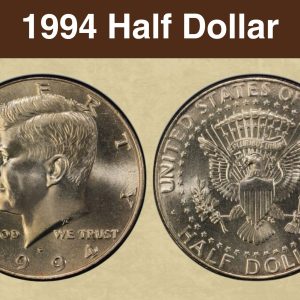
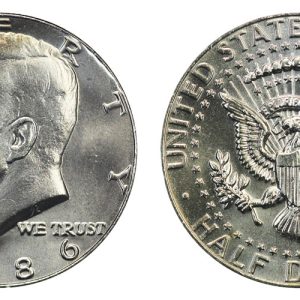
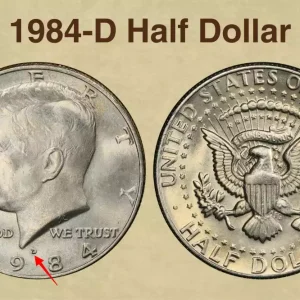
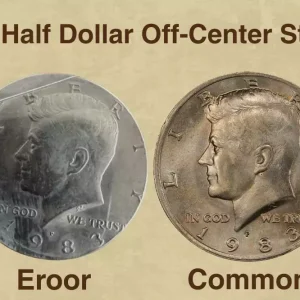
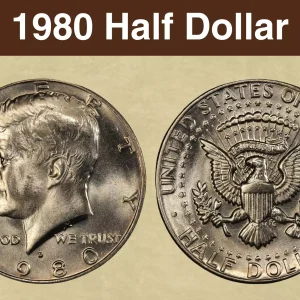
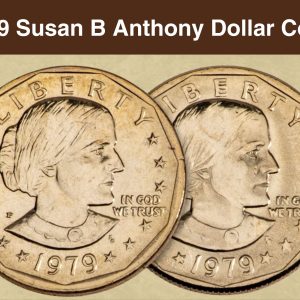
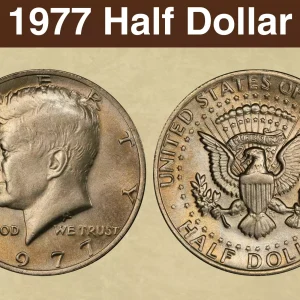
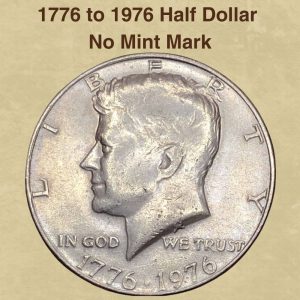
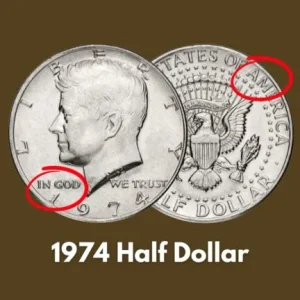
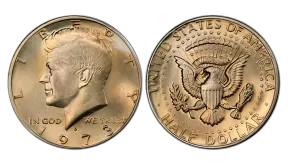
How much is a 1989 Kennedy half a dollar worth?
A 1989 Kennedy half dollar’s value depends on its condition and mint mark. Circulated, common-issue coins are worth around $ 1 $ 1 $ 1 to $ 1.50 $ 1.50 $ 1. 5 0, while uncirculated versions are valued between $ 1.30 $ 1.30 $ 1. 3 0 and $ 200 $ 200 $ 2 0 0 or more, depending on the mint mark (P, D, or S) and grade. Proof coins, marked with an “S” for San Francisco, have a wider value range of about $ 2.70 $ 2.70 $ 2. 7 0 to $ 55 $ 55 $ 5 5.
What errors to look for on Kennedy half dollars?
Look for common Kennedy half dollar errors such as doubled dies, off-center strikes, die breaks, and filled or missing mint marks. Specific rare errors include the 1964 “Accented Hair” variety, the 1971-D and 1977-D struck on 40% silver planchets, and 1968-S proof coins with an inverted mint mark. For recent coins, look for 2024 errors like the dropped star or die clashes.
Which Kennedy half dollars are worth money?
Kennedy half dollars that are worth money are generally 1964-dated coins, those with minting errors like double dies, or rare proof and Special Mint Set (SMS) versions from specific years. The highest-value coins often have special features, such as the “accented hair” variant on some 1964 examples, or a pristine grade like a PR70 or SP68. Coins minted after 1971, especially those with no mint mark, can also be valuable if they are in exceptional, uncirculated condition, notes this YouTube vi…
Are Kennedy half dollars minted in 1964 especially the SP68 type rare and valuable?
With only a few certified examples by NGC and PCGS, the 1964 SMS Kennedy half dollar stands out for its rarity and has fetched auction prices as high as $156,000 for specimens in SP68 grade. Accented Hair Proof: This variety was struck early in the production using the original design dies.